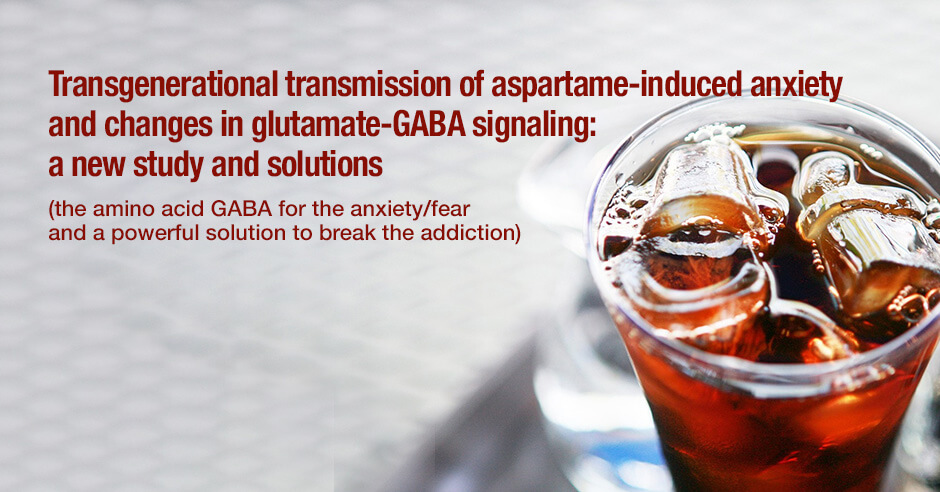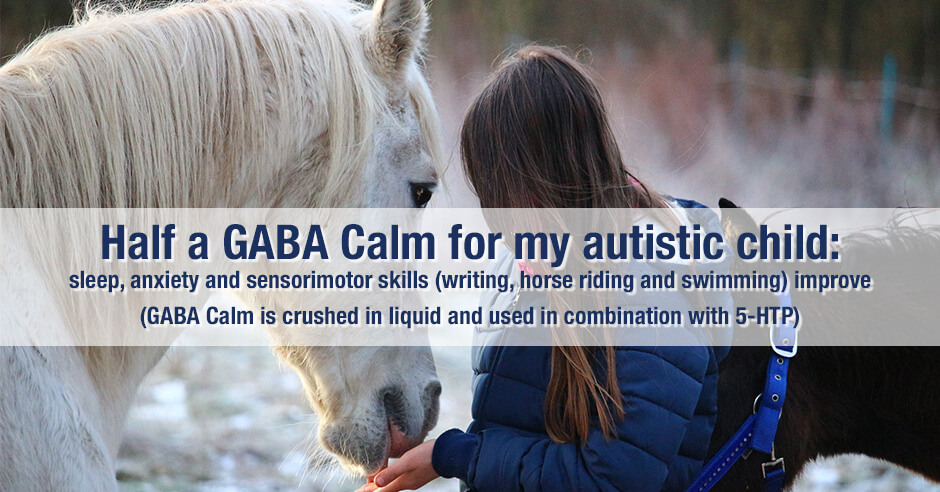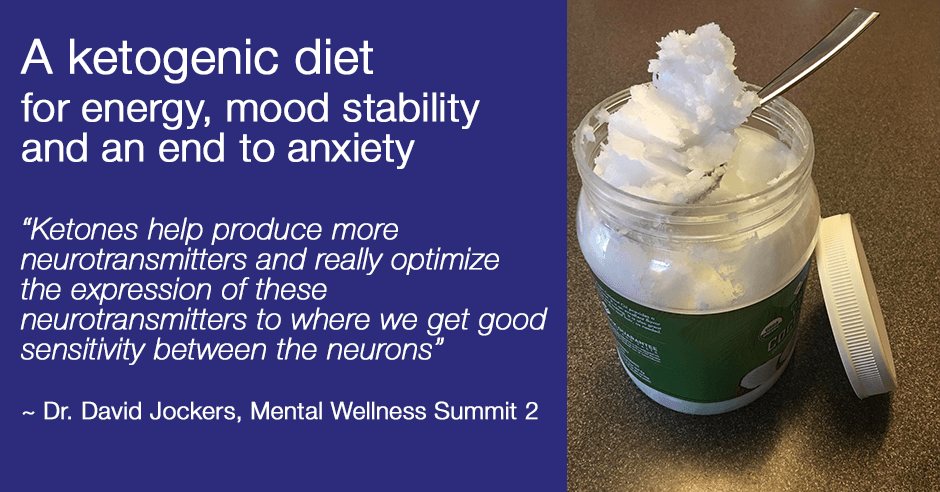
Sandra shared this heartening feedback on how GABA helped right after the passing of her mum. She also voiced her surprise that it could have such a profound effect at a sad time like this, asking me if this was possible:
I recently started taking GABA Calm lozenges. I settled on a small dose of one lozenge at bedtime. Initially I took this for tense neck and shoulder muscles due to years of anxiety.
What I have noticed in the past month is that I seem quite calm although I do still have tense neck muscles.
Last week I experienced a profound bereavement with the passing of my mum who I have been caring for. I am genuinely surprised at how I have handled this stressful situation including the funeral. I have always been quite emotional and I have found myself, although sad, sitting in a feeling of peace and calm most of the time.
Is it possible that the GABA Calm is contributing to this? It was my understanding this product would assist with my tense muscles but I feel like it has helped me tremendously with my mindset, emotions and mood.
I look forward to your reply.
I offered my condolences for the loss of her mum and said how heartened I felt, hearing that she had a feeling of peace and calm most of the time. And the fact that GABA had helped with the stressful events of the funeral and her mindset, emotions and mood. I would expect the feeling of peace and calm, and helping reduce overall stress. The calming amino acid supplement, GABA, has long been recognized to help ease the more physical type of anxiety.
But because the amount of GABA she was taking didn’t help with her tense muscles, some of the benefits may have been as a result of GABA reducing the distressing unwanted thoughts. The emotions and mood are added benefits that we don’t always hear about with GABA but are not unheard of (more on this below).
I thanked Sandra for sharing this wonderful feedback, letting her know I’d share it as a separate blog, so we can offer support to others in similar situations. I’ll also be sharing this blog with her so she understands some of the mechanisms better too. In fact, I only made the unwanted thoughts connection after having responded to her.
GABA helps with inhibition of unwanted thoughts
In the past I’ve blogged about how Scientists identified a mechanism that helps us inhibit unwanted thoughts:
We are sometimes confronted with reminders of unwanted thoughts – thoughts about unpleasant memories, images or worries. When this happens, the thought may be retrieved, making us think about it again even though we prefer not to. While being reminded in this way may not be a problem when our thoughts are positive, if the topic was unpleasant or traumatic, our thoughts may be very negative, worrying or ruminating about what happened, taking us back to the event.
Scientists have identified a key chemical within the ‘memory’ region of the brain that allows us to suppress unwanted thoughts, helping explain why people who suffer from disorders such as anxiety, post-traumatic stress disorder (PTSD), depression, and schizophrenia often experience persistent intrusive thoughts when these circuits go awry.
Professor Anderson, Dr. Schmitz and colleagues showed that the ability to inhibit unwanted thoughts relies on a neurotransmitter – a chemical within the brain that allows messages to pass between nerve cells – known as GABA.
GABA is the main ‘inhibitory’ neurotransmitter in the brain, and its release by one nerve cell can suppress activity in other cells to which it is connected.
Anderson and colleagues discovered that GABA concentrations within the hippocampus – a key area of the brain involved in memory – predict people’s ability to block the retrieval process and prevent thoughts and memories from returning.
You can read more on the blog post here: GABA helps with inhibition of unwanted thoughts
If you are using the GABA with success already and experience the loss of a loved one, you may find you need to increase your dose for a period of time.
There is individual variability in the capacity to cope with stress during bereavement
Research supports that there is “individual variability in the capacity to cope with stress” during bereavement and there are differences in symptoms and physiological changes. This paper, Long-term immune-endocrine effects of bereavement: relationships with anxiety levels and mood, identified changes in depression, anxiety, adrenocorticotropin and cortisol plasma concentrations, beta-endorphins, and reduced “functional activity of natural killer cells.” And the two different groups of people in the study had different symptoms and physiological changes.
GABA and glutamate, and the HPA axis in depression/bereavement
The above paper doesn’t mention GABA but growing evidence indicates that glutamate and GABA, and the HPA axis/corticotropin-releasing hormone, plays a role in depression and presumably bereavement too. This may be another mechanism that led to the feelings of calm that Sandra experienced.
You’ll need to figure out your unique biochemical needs
When you experience the loss of a loved one, you’ll need to figure out your unique biochemical needs and address them one by one. You may need GABA support like Sandra and/or may find you need serotonin support (with tryptophan or 5-HTP) and/or may need endorphin support (with the amino acid DPA/d-phenylalanine).
Both GABA and serotonin support also helps to address sleep problems. DPA helps especially with the emotional pain and weepiness, and if you’re self-medicating with comfort foods while grieving.
If you have high cortisol you may benefit from Seriphos or Lactium.
Keep in mind that nutritional support is immensely helpful during caregiving too. Here is just one example: When using the amino acid DPA (d-phenylalanine) I have more resilience and more buffer in the caregiving work I do, and just the oops’s of life
Helping Sandra ease her still tense neck muscles
For her ongoing tense neck and shoulder muscles I suggested a higher amount of GABA may be needed. She reported back that taking it in the morning made her sleepy and a couple of times she noticed a headache.
When GABA in the day causes sleepiness I have clients use less GABA more frequently or to take more at night to carry over the next day. In this case probably a GABA-only product because of her headaches.
She did share that GABA was her starting point with the intention of including tryptophan for ruminating and fearful thoughts which do stop her from participating in various activities. Low serotonin does cause TMJ (temporomandibular joint) pain and it’s possible this is contributing to her ongoing tense neck and shoulder muscles, and tryptophan may be the solution.
We also address low magnesium if applicable. I’d also suggest looking into dietary oxalates too and getting checked for physical issues by a chiropractor and/or osteopath and/or physical therapist.
You can read our discussion on this blog.
Resources if you are new to using GABA or tryptophan or DPA as supplements
If you are new to using GABA or tryptophan or DPA as supplements, here is the Amino Acids Mood Questionnaire from The Antianxiety Food Solution (you can see all the symptoms of neurotransmitter imbalances, including low GABA, low serotonin and low endorphins).
If you suspect low levels of any of the neurotransmitters and do not yet have my book, The Antianxiety Food Solution – How the Foods You Eat Can Help You Calm Your Anxious Mind, Improve Your Mood, and End Cravings, I highly recommend getting it and reading it before jumping in and using amino acids on your own so you are knowledgeable. And be sure to share it with the practitioner/health team you or your loved one is working with.
There is an entire chapter on the amino acids and they are discussed throughout the book in the sections on gut health, gluten, blood sugar control, sugar cravings, anxiety and mood issues (which include rage/anger/irritability/self-harm).
The book doesn’t include product names (per the publisher’s request) so this blog, The Antianxiety Food Solution Amino Acid and Pyroluria Supplements, lists the amino acids that I use with my individual clients and those in my group programs. You can find them all in my online store. The above oral lavender products are available in my online store too.
If, after reading this blog and my book, you don’t feel comfortable figuring things out on your own (i.e. doing the symptoms questionnaire and respective amino acids trials), a good place to get help is the GABA QuickStart Program (if you have low GABA symptoms). This is a paid online/virtual group program where you get my guidance and community support.
If you are a practitioner, join us in The Balancing Neurotransmitters: the Fundamentals program. This is also a paid online/virtual program with an opportunity to interact with me and other practitioners who are also using the amino acids.
Has GABA or tryptophan or DPA helped you after the loss of a loved one? How did each one help?
Were you surprised that they would help so much?
If you were using the aminos with success already did you find you needed to increase your dose for a period of time?
What else has helped you at a time of loss?
If you have questions and other feedback please share it here too.




